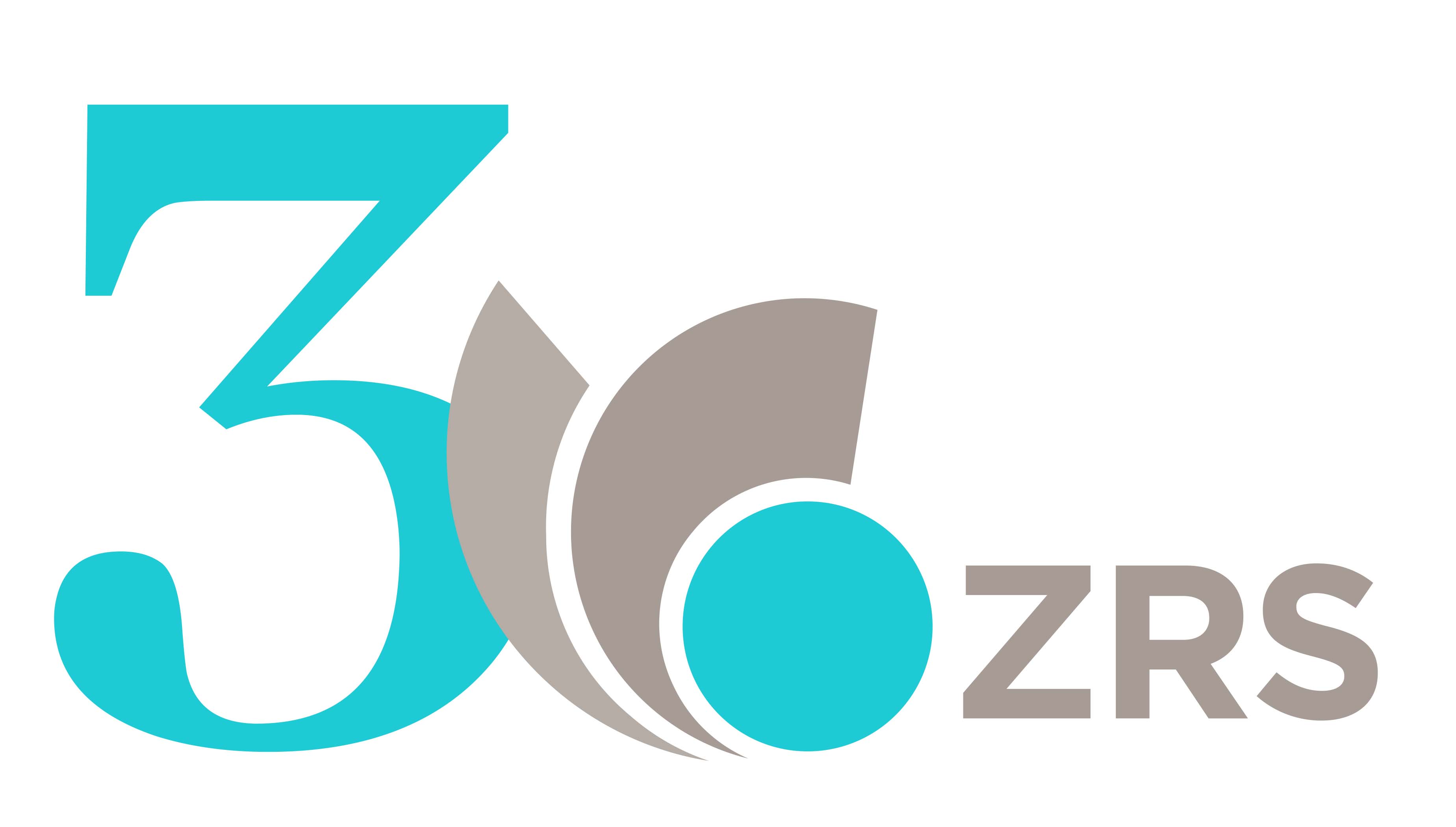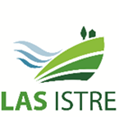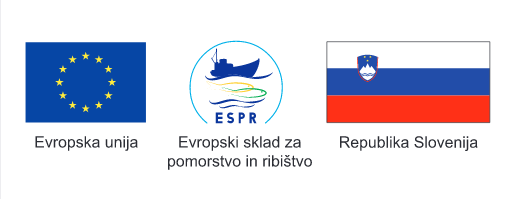
PRESENTATION
The Institute for Kinesiology Research (IKARUS) was founded with the vision to develop a ‘different’ kinesiological science in Slovenia. And »Kinesiology for the Quality of Life« still remains the vision of our team of researchers who work in the fields of kinesiology and ergonomics. Numerous projects and renowned scientific results confirm our work, motivate us and promise us a better tomorrow. We are glad that we are able to successfully raise and educate new generations of kinesiologists who will face new challenges and responsibilities in the future.
Who we are
The Institute was a novelty in Slovenia, since it intensively worked at the international level, cooperated with distinguished researchers and faced great challenges. Today, our situation is slightly easier, since we are renowned and well recognised.
Our team of researchers is quite diverse, interdisciplinary and has a common goal – to preserve healthy individuals within a healthy environment and protect it by focusing on quality and sustainable development. This interdisciplinary aspect and our vision integrate us in numerous incentives of the universities, research institutions, companies; therefore, we successfully cooperate with each of them. Research equipment, kindness and the readiness of researchers as well as our knowledge are the results of rational operations and decision making of all members of the Institute, thus enabling us to implement major projects.
Competences and achievements
We must emphasise that we are proud of our international research programme »The Impact of Simulated Weightlessness on Human Organism«, within the scope of which we implemented bed-rest studies and examined the response of the human body in a weightless environment – space. This approach enables us to study the processes of the human organism at sudden inactivity (diseases, injuries), sedentary lifestyle and ageing. It enables us to test the efficiency of various interventions which can be implemented to contradict the impacts of a sedentary lifestyle.
We should also mention leading of the national research project entitled »Kinesiology for the Quality of Life« and a number of national projects in the field of kinesiology, ergonomics, sports, biomedical technology etc. In 2010 and 2011 we started the Applied Kinesiology study programme on all three Bologna study levels. The results of our work are recognised by publications in the best journals as well as in our own scientific journal Annales Kinesiologiae. Nevertheless, we were placed under 150th place on Shanghai list of best departments.
Mission and vision
The research team of the Institute is transfers knowledge with accrediting of study programmes and teaching activities in various universities, stimulate quality, creativity and cooperation at the international level. We wish to integrate the dimensions of ergonomics and kinesiology in the society, thus enabling it to thrive. Our mission is to study and simulate a healthy lifestyle: with sufficient movement, appropriate nutrition, and in an appropriately ergonomic environment.
Head: Boštjan Šimunič, PhD, Principal Research Associate
E-mail: ikarus@zrs-kp.si
Phone: +386 5 663 77 00
RESEARCHERS

Boštjan Šimunič, PhD
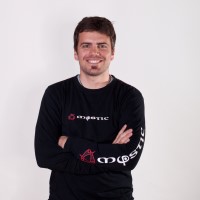
Uroš Marušič, PhD

Miloš Kalc

Matej Kleva
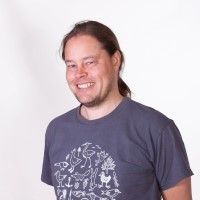
Cécil Meulenberg, PhD

Zoran Milanović, PhD

Marco Vincenzo Narici, PhD
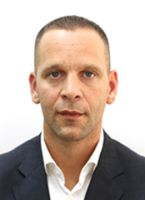
Ljubomir Pavlović, PhD

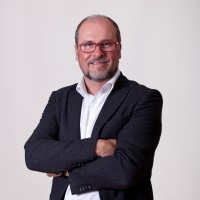
Rado Pišot, PhD

Saša Pišot, PhD

Katarina Puš, MSc

Carlo Reggiani, PhD

Luka Šlosar, PhD

Kaja Teraž, MSc

Jernej Završnik, PhD

Damir Zubac, PhD
RESEARCH PROGRAMMES
Kinesiology for quality of life (P5-0381)
Kinesiology for quality of life is gaining on the importance. With evolution and technological development we started neglecting one of fundamental biological needs-movement, and forgotten about the important role it plays and the effects that it has on our the health and function. The general lack of physical activity (PA), the ageing of the population, the earlier onset of degenerative processes, a sedentary lifestyle, an unbalanced diet, environmental and ergonomic effects and extreme workload are factors that directly affect the individual’s performance and efficiency and quality of life. The spiral model of effects of physical inactivity (PI) puts at its base 3 fundamental factors: the lack of PA and motor competences and obesity. These factors often work simultaneously, and lead to irrational PA, excessive energy consumption and rapid fatigue, and consequently manifest in negative physical and motor self-esteem, which affect the quality of life, and the alienation from social activity. Based on theoretical considerations and sci. evidence, we established a framework for further research through the prism of 3 periods of motor development: (1) of establishing motor competences; (2) of the usage of motor competences; and (3) of preserving motor competences.
ARRS Code: P5-0381
Period: 1. 1. 2017 – 31. 12. 2021
ONGOING RESEARCH PROJECTS
The role of the brain in physical and mental fatigue (N5-0246)
ARRS Code: N5-0246
Project duration: 1. 1. 2022 – 31. 12. 2025
Project leader: Uroš Marušič, PhD, Senior Research Associate
Project holder: ZRS Koper, Institute for Kinesiology Research
Fatigue –tiredness, exhaustion- describes a physical and/or mental state of being tired and lack of energy. There is a wide range of causes of fatigue such as medical conditions, life-style or work-space related issues, but also emotional concerns and stress. Fatigue occurring during exercise consists of a complex interaction between peripheral (muscle) and central (central nervous system) aspects. There is an important role for the brain (neurotransmission) in exercise-induced fatigue, but at the same time there is a lack of evidence on what that role is, and how this could be mechanistically explained. Also mental fatigue resides from the brain, but little is known about its mechanisms.
In this project we want to determine how (mechanistically) and where (location in the brain) fatigue resides. To do this we will manipulate brain neurotransmission (serotonin, dopamine and noradrenaline) and we will determine which brain regions play an important role in the onset of physical (WP1) and mental (WP2) fatigue through the measurement of brain activity with electroencephalography (EEG). In the final stage (WP3) we will combine both forms of fatigue to determine which cortical areas and neurotransmitters are potentially involved in the negative effects of mental fatigue on the perception of effort and endurance performance. The present project progresses on the current knowledge to further unravel the complex central triggers of fatigue during mental and/or physical effort.
Validation of a new muscle quality marker for the diagnosis of sarcopenia (J7-2605)
ARRS Code: J7-2605
Project duration: 1. 9. 2020 – 31. 8. 2023
Project leader: Boštjan Šimunič, PhD
Project holder: Institute for kinesilogy research
Decomposition of skeletal muscle tensiomyogram with identification of contractile paramaters for sensitive monitoring of muscle adaptation (L7-9421)
Skeletal muscle’s intrinsic contractile properties are assessed using dynamometer, attached distally from observed joint, although science a long time ago brought-up several issues that diminishes the quality of the interpretation of such approach. In 1980s an alternative approaches for detection of more intrinsic contractile properties were developed and were named by the nature of the sensor: phono/soundmyography, as they use microphones to detect muscle sound; vibromyography uses accelerometers and laser beams to detect thickening and vibration of a muscle belly. All those methods aimed to assess muscle contraction directly on the muscle belly and not as dynamometry.
Slovenia played a marginal role in this quest with a Tensiomyography (TMG) that detects skeletal muscle belly thickening during twitch isometric contraction selectively and non-invasively. Since the first TMG publication back in 1990 already 107 SCI publications arose with an exponential trend. TMG allows high signal-to-noise ratio, high sensitivity and no need for post-processing of the signals. Immediately we found high correlation between myosin heavy chain I and TMG derived contractile parameters.
The TMG method is generally accepted; however, it needs more basic investigation to understand the signal’s parameters, signal pathways and mechanisms for a high quality of interpretation. There are several issues that needs to be investigated. Therefore, the aim of this project is to design a TMG decomposition model to different motor unit phenotypes for better understaing of mechanisms of contraction and the effects of other factors, such are: muscle size and architecture, muscle composition, muscle fluid content, muscle fibre mechanics and geometry (cross sectional area, velocity of contraction, force, tension), adhesive tissues (costameres, tendons), fatigue/potentiation.
Firstly we will upgrade equipment in a specialised laboratory to detect high-speed muscle fibre dynamics of geometry changes during contractions (shortening, thickening). This will give us a new approach to detect intrinsic contractile properties of single fibres and they will be used in construction of TMG decomposition model, which will be upgraded until the certain accuracy and complexity. Finally the model will be cross-validated and applied in four studies.
In a fatigue study we will test decomposition for sensitivity to assess muscle contractile properties changes as a result of different fatigue types affecting motor units. Similar will be done in acute and chronic adaptation study to 8-weeks of plyometric exercise. Within the atrophy study we will test TMG and decomposition to be sensitive for early detection of atrophic processes after inactivity, as we know in certain populations atrophy is rarely reversible (this study will be co-financed by Italian Space Agency in 2019). Similarly, we will validate decomposition results to classification of sarcopenia, as there is EU consensus set for sarcopenia classification but evidence is that there is almost no agreement in different methods for sarcopenia classification.
TMG decomposition is surely necessary for further method’s development to assure more accurate understanding of the signal and better interpretation of the results. However, this is possible only with invasive procedures, where this research team has vast experience, as lot of our publications comes from the analysis of muscle samples.
ARRS Code: L7-9421
Period: 1. 7. 2018 – 30. 6. 2021
Head: Boštjan Šimunič, PhD, Principal Research Fellow
Participating Institute: Institute for Kinesiology Research
Decomposition of compound muscle action potentials (J2-1731)
ARRS Code: J2-1731
Project duration: 01. 07. 2019 – 30. 06. 2022
Project leader: Aleš Holobar, PhD
Project holder: University of Maribor, Faculty of Electrical Engineering and Computer Science
Participating institute of the SRC Koper: Institute for kinesiology research
FINISHED RESEARCH PROJECTS
The effect of variable load exercise on skeletal muscles in elderly: a randomised cross-over study (Z7-9420)
Human aging is characterized by an accelerated loss of skeletal muscle mass and strength, which leads to a reduced functional capacity and an increased likelihood of falling and frailty. Subsequently, the development of these detrimental changes results in a loss of independence and reduction in the quality of life in elderly. This is also true at both the individual and societal level, as increasing financial demands on the healthcare system may compromise its capacity to cope with the aforementioned issues in the future. Muscle wasting is a result of mainly loss of fast twitch motor units, where males loose about 30% until the age of 80 years while females about 15%. However, both sexes lose 85% of muscle power in the same age span. It seems that existing training regimes are not appropriate for the maintenance of muscle function and sustainable quality of life. Resistance training (RT) is identified as an appropriate training for maintaining muscle mass and function; however recently higher intensities (e.g. power or high-velocity trainings) are recommended for activation of fast twitch motor units and fall prevention. Although power training could be implemented in older the doubt in safety of such exercises remains. We have co-developed a new of robotic exercise machine where exercise load and velocity could be regulated to such a measure that safety could be met. Thus, the aim of this research proposal is to examine whether a novel Kineo variable load RT program is capable to tackle excessive aging muscle atrophy and contractile capacity decline. Secondly, we plan to examine whether these potential gains in muscle mass and power could be translated into functional capacity improvement in elderly.
Current data suggest a dramatic loss in type II fibers with aging, and it is well established that this fiber type activation plays a vital role in the rapid force production capacity which is important to counter the unexpected perturbations during walking and aid in avoiding falls. Thus, RT strategies are outlined as a viable tool to tackle age-related degenerative changes in muscle function and force production. The underlying assumption here is that the classical RT would be translated into a greater muscle strength output, improve balance and lower the likelihood of frailty in elderly. However, this has been challenged recently. Walker and co-workers (2015, 2017) suggested for 8-12 week exposure to moderate load RT as ineffective to enhance either power or functional capacity of lower limb muscles in elderly. Thus, there is a crucial need to revisit current RT strategies and design novel protocols to counter the detrimental effects of aging, since this bears strong impactions on quality of life may lead to muscle function rejuvenating. Accordingly, we propose a novel variable RT, conducted on Kineo dynamometry machine. We hypothesize that this variable RT will be a viable tool to tackle aging muscle atrophy, presumably via additional type II muscle fiber recruitment. This would than govern the current fall prevention strategies and improve functional capacity in elderly.
We plan to recruit volunteers (age >65) from the Primorska region. Prior to any data collection they will undergo a general health examination. Exclusion and inclusion criteria will be applied and those applicants remaining will be allocated into three groups (variable RT, classical RT and controls), in a randomized counter balance crossover, with a 2x washout period. All participants will be submitted to 8 consecutive weeks of training protocols. Data collection will be carried out on 11 separate occasions, including familiarization, pilot testing, and main portion data collection. We plan assess muscle power, contractility, architecture, functional capacity, blood markers and oxygen uptake via pre/post measurements and a follow-up preceding each condition.
We plan to use novel instrumentation in attempt to tackle aging muscle atrophy and function. Based on the findings, we could develop safety guidelines and protocols aimed at reducing health risks in this aging population. In case our hypotheses are confirmed, we may offer important information to the healthcare system, especially for reducing economic burden.
ARRS Code: Z7-9420
Period: 1. 7. 2018 – 30. 6. 2020
Head: Damir Zubac, PhD, Assistant with Doctorate
Participating Institute: Institute for Kinesiology Research
The development of sport injury model for effective prevention, diagnostics and rehabilitation (L5-8245)
Injuries regularly accompany sports on all levels and to a great extent determine the successes or sports career and life of active athletes. Epidemiological data and data on the success rate of rehabilitation or return to sport are extremely difficult to compare, mostly due to non-harmonisation of definitions. However, we can conclude with great certainty that the incidence of sport injuries is increases and that some sports are more exposed to injuries (football, hockey, gymnastics) than others. Not only the results of athletes and their teams are connected to sport injuries, but also their long-term health, quality of life, socio-economic status and consequently, the general financial burden on the society.
With collaboration with Slovenian Olympic Committee, we will develop a standardised information system for registering readiness of athletes and their sport injuries. During the project period, we will do so for 5 sports (football, basketball, handball, skiing, and gymnastics). Furthermore, we will design a methodology for assessment of sport injuries for the purpose of out aims. However, the information system will be available also to scientists and expert from different fields (epidemiologists, doctors, kinesiologists, dietitians etc.) for safe and ethically acceptable access to data with the goals to discovering new knowledge, risk factors, international comparability and transfer of best practices.
ARRS Code: L5-8245
Period: 1. 5. 2017 – 30. 4. 2020
Head: Rado Pišot, PhD, Principal Research Fellow
Participating Institute: Institute for Kinesiology Research
Assessment of blood parameters and extracellular vesicles for optimization of sport results (J5-7098)
Composition of blood and properties of its constituents importantly influence achievements in sport and also indicate health risks. Extracellular vesicles (EVs) are tiny (in the range of 20 nanometers – 1000 nanometers) membrane – enclosed cell fragments which are formed in the last stage of the membrane budding or in cell death. They are shed into extracellular siolution and becomse mobile with body fluids, especially blood. Isolation of EVs from body fluids (especially blood) and their assessment (measuring their concentration and composition) reflects the status of the organism, in particular of the cells in blood, of blood plasma and endothelium.
Knowledge on the impact of specific sport activities connected with results of competitive and recreational sport, on mechanisms connected to EVs is yet rudimentary. It is of interest how different sport regimes (aerobic, anaerobic, intensity, mode and level of competition), environmental factors (hypoxia, temperature, pollution), intake of substances (water, dietary supplements), and physical status (sex, age, body mass index, fat and muscle mass) affect microvesiculation in vitro and ex vivo and what is the relation of these processes to composition of blood.
It is our aim to elaborate a method for following, predicting and optimizing performance in sports, based on assessment of EVs in blood isolates. The method will improve planning of the preparation for sport achievements and minimize the risk for adverse effects such as cardiovascular overload, oxidative stress and thromboembolisms. We will consider some chosen environmental impact factors with special emphasis on nanoparticles, which can cause oxidative stress. Sport results and athletes’ health status will be interpreted in the light of EVbased biomarkers and blood composition. Based on the interaction between EVs and nanoparticles we will design a bionanosensor for assessment of the subject’s status.
We will study acknowledged blood cell parameters (the number of cells of different types, their volume and distribution), cell activation markers, plasma content of growth hormones, cholesterol, inflammation and antiinflammation markers and and coagulation parameters, by standard methods (flow cytometry and ELISA tests). State of the cholinergic system will be assesed by spectroscopic methods. We will isolate EVs (by centrifugation and washing of samples) and study their concentration in isolates and presence of specific receptors at their surfaces by flow cytometry. The impact of substances and pollutants will be studied through their interaction with blood cells and phospholipid vesicles. Indirect effects such as osmosis and interaction with added substances will be assessed in vitro by different micorscopic techniques and flow cytometry and described by theoretical models based on laws of mechanics and thermodynamics. We will study response of competitive and recreational athletes of both sexes on acute aerobic and anaerobic efforts during preparation (also in hot, hypoxic and polluted environment), before and after the representative competition and in the process of regeneration. We will study acute responses to hydration and intake of food supplements. The level of peripheral and central fatigue directly after the effort will be measured with tensiomyographic method.
Based on the support of endogenous mechanisms in athletes we will elaborate and optimize protocols as a base for personalized plan of athlete preparation for achievement of high level results. Results of the study will contribute to a decrease of the risk for adverse effects on athletes’ health. We will improve the method for EV assessment by a protocole as regards water and food supplement intake and instructions on physical activities prior to blood sampling. We will design a bionanosensor for EV assessment.
ARRS Code: J5-7098
Period: 1. 1. 2016 – 31. 12. 2018
Head: Veronika Kralj Iglič, PhD
Lead partner of the project: University of Ljubljana, Faculty of Health Sciences
Participating institute ZRS Koper: Inštitut za kineziološke raziskave
Definition of non-invasive method for quantification of skeletal muscle atrophy: from validation to application (L5-5550)
Modern analysis of human working and living environment and of the most common causes of injuries and illnesses report 25% of incidence of muscle pain. In 49% the damage of musculoskeletal system causes the absence from work and as many as 60% causes sustained injuries. In the growing physical inactivity rate maintaining muscle mass is crucial to human health.
Muscle atrophy is a well known phenomenon that defines the loss of muscle volume, as a result of illness or injury, unbalanced diet or lack of physical activity. Despite a number of researches exploring the findings of muscle atrophy and analyzing its implications, there are still many unresolved issues, especially in terms of objective indicators, methods and procedures of assessment. Today’s procedures are complex, less sensitive, especially outside clinical cases, when it is important to detect even the slightest changes.
In 1978, the relationship between the mechanical force response and neuromuscular electrical activity was proposed as an objective assessment method and as a measure of electromechanical efficiency. Due to the low sensitivity this method had very limited practical use. The essential shift took place in 1990 when the lateral vibrations of muscle fibers, instead of force, in the same ratio were studied and thus more appropriate assessment procedure for monitoring muscular atrophy was developed. Soon, the researchers again encountered barriers. Too low sensitivity and repeatability limited the use of the method only to severe clinical cases and chronic diseases. The idea of a non-invasive marker for assessing muscular atrophy has remained unstudied and abandoned to this day.
In 1997 the Slovenian scientific space contributed significantly to this goal. The difficulties of assessment procedures and sensors measuring transversal mechanical muscle belly deformations (accelerometer, microphone, laser beam) were overcome by the proposed displacement sensor. The sensor presses the muscle belly through controlled contact and thus increases geometrical difference between relaxed and contracted muscle. This results in non-invasive and selective method, which is characterized by high sensitivity and repeatability. The method of monitoring the radial muscle belly movement has been validated, tested and patented.
At the same time the method for detection of the surface neuromuscular electrical activity was upgraded and since 2004 it has allowed 2D monitoring of skeletal muscle on its whole surface and depth. In Slovenia patented method for decomposition of motor unit action potentials enables decomposition of the surface electromyogram and with it identification of the active motor units, recruitment assessment, muscle fatigue, etc.
The main objective of the proposed project is to define and develop non-invasive procedure for assessing skeletal muscle atrophy and hypertrophy and to improve the current assessment procedures of muscular adaptation. Based on the mechanical response thickening, movement, vibration of muscle fibers as well as neuromuscular electrical activity, we will define the appropriate marker. Indirect objectives are aimed at modelling temporal dynamics of muscle adaptation on physical inactivity, aging, exercise, and rehabilitation after knee/hip artheroplasty. By developing the provided marker of muscle adaptation we will add a new service – test.
The project will be conducted in accordance with the rules of carrying out experiments on human; with the permission granted by ethics commission, consents of the participants and in accordance with the rules of the Declaration of Helsinki. Upon successful completion of the project we anticipate a patents application, publication of several scientific articles, two PhD theses, and the creation of appropriate education program.
ARRS Code: L5-5550
Period: 1. 8. 2013 – 31. 7. 2016
Head: Boštjan Šimunič, PhD, Principal Research Fellow
Participating institute ZRS Koper: Institute for Kinesiology Research
ONGOING INTERNATIONAL RESEARCH PROJECTS
PARIPRE
PARIPRE – Physical activity-related injuries prevention in adolescents
European Commission, EACEA Agency: Erasmus+ Sport, Collaborative Partnerships
Grant Agreement number: 622594-EPP-1-2020-1-SK-SPO-SCP
Regular physical activity is one of the most cited health protective factors for the prevention of the leading noncommunicable diseases. In adolescence, physical activity contributes to healthy development of musculoskeletal system, cardiovascular system, maintenance of optimal body weight, and it is also associated with numerous psychological and social benefits. Nonetheless, physical activity as health promotion tool is not one without adverse effects.
The literature provides sufficient examples of epidemiological studies that describe the incidence and burden of physical activity-related injuries sustained during high-intensity sports and also during recommended types of lower intensity physical activity. Therefore, active physical activity-related injuries prevention and recognition of their risk factors must be integral component of physical activity promotion.
PARIPRE (Physical activity-related injuries prevention in adolescents) project aims to address all six domains proposed by Centres for Disease Control and Prevention for physical activity-related injuries prevention: Data and Surveillance, Research, Communication, Education and training, Health systems and health care, and Policy. To cover first two domains, PARIPRE will use cross-sectional study (Health Behaviour in School-aged Children (HBSC) survey) to gather epidemiological data about physical activity-related injuries in participating countries and intervention study to determine effect of newly designed intervention programme on injuries in adolescents.
To cover other four domains the project will use various activities such as preparation of scientific papers and evidence-based recommendations, creating promotion materials, web page and social media profile and organising workshops for pre-service and in-service teachers and coaches, medical providers, researchers and policy makers.
Partner organisations:
- University of Presov (UNIPO), Slovakia (coordinator)
- Science and Research Centre Koper (ZRS), Slovenia
- Pavol Jozef Safarik University in Kosice (UPJS), Slovakia
- Sports Union of Slovenia (SUS), Slovenia
- Institute of Mother and Child Foundation (IMCF), Poland
- UKK Institute – Centre for Health Promotion Research, Finland
- Palacky University Olomouc (PUO), Czechia
- National Institute of Public Health (NIJZ), Slovenia
Project duration: 1. 1. 2021 – 31. 12. 2023
Project holder: University of Presov
Project leader: Peter Bakalár, UNIPO, Faculty of Sports
Participating institute at ZRS Koper: Inštitut za kineziološke raziskave; prof dr. Boštjan Šimunič
Web page: PARIPRE Erasmus+ Sport
SKIEASY
SKIEASY (Educational, Accessible, Simple, Youthful) Approach to Skills Acquisition in Skiing
European Commission, EACEA Agency: Erasmus+ Sport, Collaborative Partnerships
Grant agreement number: 622961-EPP-1-2020-1-SI-SPO-SCP
The development of alpine skiing has dramatically changed the skiing technique, allowing higher velocities, and providing less security. At the same time, we are meeting more skiers with decreased motor and functional abilities and different expectations. It is essential to adapt and upgrade the procedures, tools, and teaching methods to such changes. Developments within globalized alpine winter tourism with different linguistic and cultural backgrounds make it necessary for ski instructors to expand their knowledge and competence. Recent experience due to the COVID-19 pandemic also directs us to search for new approaches based on mobile platforms and multimedia technologies. Our main objectives are hidden in the initials of the acronym EASY:
E-to promote education in and through sport with special focus on ski instructor and learner skills and competence development; to enrich (self)employment possibilities for professional and dual career development; teaching module – SKI EASY certificate;
A-accessible learning and stimulating participation in outdoors sport; Snowsports Days to reach the population of deprived children and let them experience snowsports with the help of local communities and volunteers;
S-simple communication: implementing an educational model of teaching skiing (ski alphabet, dictionaries, and animation) for ski beginners of all partners’ linguistic groups to simplify the ski teaching process;
Y-youthful: a state-of-the-art IT-driven approach to teaching (interactive games, gadgets, and ICT applications (cartoon movies), mobile platforms, and multimedia technologies for overcoming language and cultural barriers).
SKI EASY activities and outcomes:
- SKI EASY teaching model adapted to language and culture diversity; free module for ski instructors to obtain a SKI EASY certificate;
- SKI EASY educational materials (manuals and ICT application for smart phone);
- SKI EASY snow days with innovative Kids U-flex technology ski equipment for children.
Partner organisations:
- Science and Research Centre Koper (SRC)
- International Association Snowsports at Schools and Universities (IVSS)
- Ski Association of Slovenia (SAS)- Ski Instructors and Trainers Association (SITAS)
- Collegio Regionale Maestri Sci FVG
- Paris-Lodron-Universitat Salzburg (UNISAL)
- Sveučilište u Zagrebu, Kineziološki Fakultet (UNIZG KIF)
- Sdruzhenie Balgarsko Ski Uchilishte – Bolgarian Ski School (BSS)
- Asocijacija Trenera i Ucitelja Skijanja u Bosni i Hercegovini (ATUS)
- Univerzitet u Nišu (UNINIŠ)
Project duration: 1. 1. 2021 – 31. 12. 2023
Project holder: Znanstveno-raziskovalno središče Koper
Project leader at ZRS Koper: prof. dr. Rado Pišot
Participating institute at ZRS Koper: Inštitut za kineziološke raziskave
Web page: SKI EASY Erasmus+ Sport
Okusi morje 2
Okusi morje 2 – Izobraževanje o klapavicah
Začetek izvajanja operacije: 01. 03. 2020
Čas trajanja operacije: 18 mesecev
Vodilni partner operacije: GASTRO PROJECT d.o.o., vodja operacije Suzana France
Partner v operaciji: ZRS Koper, Inštitut za kineziološke raziskave, dr. Cecil Johannes Wilhelmus Meulenberg
Spletna stran projekta: www.okusimorje.info
Naložbo sofinancirata Evropski sklad za pomorstvo in ribištvo (ESRP) in Republika Slovenija (RS).
Namen operacije »OKUSI MORJE 2« – Izobraževanje o klapavicah je spoznavanje in osveščanje javnosti o lokalno ekološko pridelanih klapavicah, skozi celotno zgodovino – tradicijo in razvojem, ki je gospodarno – trajnosten, morju – naravi prijazen način gojenja, ki ohranja biodiverziteto. Brez vplivov – obremenitev na okolje, za človeka pa pomemben naraven in zdrav vir živila, ki je cenovno dosegljiv vsem slojem družbe, trenutno še premalo poznano živilo. Cilji operacije so pridobivanje znanja, dvig zavesti, krepitev konkurenčnosti gospodarstva v povezavi s podeželjem in sonaravnim ribištvom – marikulturo z uporabo lokalno pridelanih sestavin, s poudarkom na ekološkem kmetijstvu po vzoru KM 0 – mreženje. Vzpodbudili bomo povezovanje lokalnih pridelovalcev na območju LAS Istre za kvalitetno bivalno okolje in turistom zanimivo destinacijo z večjimi možnostmi za zaposlovanje v turizmu in širše.
TwinBrain
TwinBrain – TWINning the BRAIN with machine learning for neuro-muscular efficiency (TwinBrain)
European Commission: HORIZONT 2020. Twinning WIDESPREAD-05-2020
Grant agreement number: 952401
The investigation of brain dynamics in most routine movements such as walking, balancing or learning new motorcognitive tasks remains a major challenge for neuroscience. An integrative approach to investigating brain and movement dynamics was recently developed under the term MoBI: Mobile Brain/Body Imaging. This technique is based on mobile electroencephalography (EEG) synchronized to motion capture to better understand the relationship between brain dynamics, movement, and cognition in more realistic (everyday) environments. Development and optimization of this technique will provide new analytical methods for high-dimensional MoBI data in ecologically valid contexts, work with data that is not yet standard in the field of human neuroscience, and lead EEG researc out of the laboratory environment into everyday situations, which become more challenging for the symptomatic population. The overall objective of TwinBrain project is to improve the scientific and technological capacity of the country with low R&I performance (Slovenia) by twinning it with three leading international research institutions (from Germany, Switzerland, and Italy). Leading researchers in the field of neuro-muscular control, MoBI and the neuroscientific investigation of embodied cognitive processes as well as machine learning will form a network of excellence that will facilitate training and early-stage research growth through the exchange of best practices, workshops and summer schools. TwinBrain will also provide short term on-site trainings, expert visits and exchanges, as well as start working on future joint research proposals and PhD projects among partners and beyond to be continued after the completion of the project. These will lead to strengthening of long-term infrastructure capacities and facilitate the development of the proposed research area and related careers.
Call: H2020-WIDESPREAD-2020-5
Topic: WIDESPREAD-05-2020-Twinning
Partner organisations:
- Technische Universitat Berlin, (Nemčija)
- Universite de Geneve (Švica)
- Universita degli studi di Trieste (Italija)
Project start: 1. 11. 2020
Project duration: 1. 11. 2020 – 31.10.2023
Project holder: ZRS Koper
Project leader at ZRS Koper: dr. Uroš Marušič
Participating institute at ZRS Koper: Inštitut za kineziologijo
Web page: TwinBrain.si
FINISHED INTERNATIONAL RESEARCH PROJECTS
MEMORI-net - Mental and Motor Rehabilition of Ictus-Network
Mental and Motor Rehabilition of Ictus-Network
Interreg V-A Italija-Slovenija 2014-2020
MEMORI-net is a joint effort to improve strategies in management of rehabilitation following the stroke, and for defining common diagnostic and therapeutic protocols, based on the most advanced scientific knowledge and the best international practices. With more than 4000 new cases a year appearing on the program area, the stroke represents one of the best is washed by the causes of intellectual and motors and disabilities. Affected people in productive years can blow a deep impact in health system, families and the whole local community economy. Although the stroke is acute vascular damage to the brain can cause damage to the entire body. Patients require interdisciplinary rehabilitation practices, but those are not fully available in all centers of the program area.
Rehabilitation after a stroke requires the involvement of a variety of people institutions and their good coordination, which are hampered by shortages common protocols, limited use of rehabilitation on home and ICT technologies, lack of linguistic tools minorities, legal restrictions on the transfer of personal health information. In order to solve these territorial problems MEMORI-net strives to create an excellent interregional network that will include various entities for stroke units and university centers specializing in diagnostics and ICT, rehabilitation centers, thermae and patient associations it has affected by stroke. Through an effective program communication and education of medical teams and patient families MEMORI-net will promote mutual knowledge exchange and improving rehabilitation practices. MEMORI-net will contribute to EUSALP and EUSAIR strategies by offering a network. It will confirm the confirmation of innovative rehabilitation products and will be also interesting for patients from other regions. MEMORI-net will be also continued after the expiry of the project, as it will also open new perspectives of rehabilitation, following other neurological diseases.
Project start: 1. 10. 2017
Duration of the project: 18 months
Head of the project at ZRS Koper: Rado Pišot, PhD, Principal Research Fellow
Participating institute ZRS Koper: Inštitut za kineziološke raziskave
Project outputs: Final report MEMORI-NET (PDF)
Operating protocol for rehabilitation and evaluation MEMORI-NET (PDF)
Crossborder agreement on Operating protocol MEMORI-NET (PDF)
SCH YA - Efficient recommended MVPA obtainement for school children and teenagers
Efficient recommended MVPA obtainement for school children and teenagers
Erasmus+ Sport
Over the last half century, we have simply stopped moving. Health organisations report that EU faces an epidemic of physical inactivity (PI), over 2/3 of population don’t meet daily guidelines for physical activity (PA). Even smaller percentage of children and youth reach the guideline levels. As a consequence, the WHO reports that PI is becoming killer No 1. Engaging children and youth in moderate to vigorous PA (MVPA) prepares them to lead physically active lives and improve health and academic outcomes. Schools play a central role in providing opportunities for children and youth to engage in PA. Physical education class (PE) is the one time during the day when all children and youth can be active. The other way is to offer them organized physical activities within existing sport clubs. Along those line, the School YA project aims to develop a model for raising daily level of the MVPA and decreasing PI in the target group of youngsters aged 12 to 15. Recent Slovenian, Dutch, and USA studies reports that 45 minutes PE classes last no more than 36, with only 9-13 min of MVPA and 16 min of PI, so youngsters do not reach more than 25% of recommended MVPA (EU Physical Activity Guidelines recommend 60 minutes daily). The project partnership (5 grass root athletic clubs and University of Primorska) plan to develop curricula for 15 PE hours that meets >50% MVPA. PE content will be selected from the lists of all motor abilities and adjusted for gender and age (12-15 years). The curricula will be developed in cooperation of athletic coaches working in sport clubs with PE teachers from elementary schools under the supervision of researchers and scientists. Developed and adjusted curricula will be presented at 10 minutes long video clips and freely distributed to PE professionals. In order to cover all basis, the clubs will organize local campaigns to encourage youngsters to join existing sport clubs in order to raise their MVPA to minimal recommended levels.
Project start: 1. 1. 2017
Duration of the project: 24 mesecev
Head of the project at ZRS Koper: Boštjan Šimunič, PhD, Principal Research Fellow
Participating institute: Inštitut za kineziološke raziskave
A-Qu-A - Aktivno in kvalitetno staranje v domačem okolju
A-Qu-A – Aktivno in kvalitetno staranje v domačem okolju
Program: Norveški finančni mehanizem 2009–2014
Trajanje projekta: 9. 4. 2015 – 31. 12. 2016
Nosilec projekta: Zavod za oskrbo na domu Ljubljana
Vodja projekta na ZRS Koper: dr. Rado Pišot, znanstveni svetnik
Sodelujoči inštitut ZRS Koper: Inštitut za kineziološke raziskave
Delež starejših ljudi se zaradi višjega standarda, prehrane, urejenega zdravstvenega varstva in staranja »baby boom generacije« iz leta v leto narašča. To pa pomeni, da narašča tudi delež ljudi, ki postajajo odvisni od okolice, čeprav želijo čim dlje ohranjati samostojnost in neodvisnost.
Po podatkih statističnega urada Slovenije je v Mestni občini Ljubljana leta 2012 bivalo 48.752 prebivalcev starejših od 65 let, kar predstavlja 17,3 odstotka populacije Ljubljane, poleg tega pa se je od leta 2000 povečala za približno 2,6 odstotka. Glede na stanje v družbi je potrebno stremeti k široki ponudbi različnih vrst pomoči za specifične potrebe starejših ter zagotoviti široko dostopnost teh storitev.
Osnovni cilj projekta je bil zagotoviti zdravo in aktivno staranje prebivalstva.
Zaradi potreb starejših po širitvi pomoči je zavod v okviru projekta »Aktivno in kvalitetno staranje v domačem okolju« uporabnikom za čas trajanja projekta, tj. od maja 2015 do konca decembra 2016, na domu nudil brezplačne storitve fizioterapije, delovne terapije, dietetike, zdravstvene nege in logopedije. Skupaj s projektnimi partnerji Mestno občino Ljubljana, Inštitutom za kineziološke raziskave, Mestno zvezo upokojencev Ljubljana, Zdravstveno fakulteto, Fakulteto za dizajn in norveškim partnerjem pa smo nudili dodatne oblike pomoči, izobraževanj, svetovanj in rekreacije za kvalitetnejše življenje v domačem okolju.
Upravičenci brezplačnih storitev v okviru projekta so bili uporabniki storitev Zavoda za oskrbo na domu Ljubljana, in sicer osebe starejše od 65 let, osebe s statusom invalida in kronično bolni in člani Mestne zveze upokojencev Ljubljana ter ostali zainteresirani posamezniki, ki so izpolnjevali enake pogoje kot upravičenci storitev Zavoda za oskrbo na domu Ljubljana.
PANGeA - Telesna aktivnost in prehrana za kakovostno staranje
PANGeA – Telesna aktivnost in prehrana za kakovostno staranje
Program: Program čezmejnega sodelovanja Slovenija-Italija 2007-2013
Trajanje projekta: 1. 10. 2011 – 31. 12. 2014
Nosilec projekta: Univerza na Primorskem, Znanstveno-raziskovalno središče
Vodja projekta na ZRS Koper: dr. Rado Pišot, znanstveni svetnik
Sodelujoči inštitut ZRS Koper: Inštitut za kineziološke raziskave
Evropska populacija se stara (Lutz et all, Nature, 2008). Tudi v obmejnih regijah med Slovenijo in Italijo je visok odstotek (18%-20%) populacije nad 65 letom starosti. Gre za zelo raznoliko populacijo med katerimi so nekateri gibalno/športno zelo aktivni, tako, da lahko današnjega 75-letnika primerjamo s 55-letnikom izpred 30 let, na drugi strani pa so posamezniki, ki jih pestijo kronične bolezni in oslabljen mišično-skeletni sistem, za katere bi lahko rekli, da so se postarali mnogo prezgodaj. V raziskavah je že velikokrat bil dokazan močan vpliv življenjskega sloga na potek in posledice staranja, pri tem pa kriteriji zdravega staranja še niso bili definirani. Globalni problem staranja ter izzivi iskanja kriterijev zdravega staranja, ki bodo posamezniku omogočili kakovostno življenje ter neodvisnost in samostojnost v pozno starost so postali eden najpomembnejših problemov sodobne družbe. EU komisija je v pričo tega imenovala leto 2012 za leto Aktivnega staranja in medgeneracijske solidarnosti.
Kar nekaj let preden se je EU odločila, da tej problematiki nameni tolikšno pozornost, smo se na Inštitutu za kineziološke raziskave Znanstveno-raziskovalnega središča Univerze na Primorskem odločili, da skupaj z domačimi in tujimi partnerji raziščemo in preučimo kriterije staranja ter družbi ponudimo vzvode, da se s problematiko spopade na osnovi konkretnih ugotovitev in dognanj. Številna znanstvena dognanja dokazujejo izjemno učinkovitost gibalne aktivnosti in zdrave prehrane pri zmanjševanju zdravstvenih tveganj in povečanju samostojnosti bivanja starejše populacije. Ustrezno informiranje in poučevanje javnosti, ki zahteva sodelovanje različnih organizacij, ima lahko pozitivne učinke na kakovost življenja starejše populacije. Projekt programa čezmejnega sodelovanja Slovenija – Italija 2007-2013 – PANGeA združuje javne ustanove iz upravičenih regij, ki skrbijo za kakovost bivanja starejše populacije, od inštitutov, univerz, do bolnišnic, občin in Nacionalnega inštituta za javno zdravje. S programi promocije, edukacije in neposrednih vadbenih aktivnosti znanja o življenjskem slogu, ki izboljša kakovost bivanja, povezujemo s praktično uporabo ciljnim skupinam starejših občanov. Pri tem se poslužujemo mreže obstoječih zdravstvenih (bolnišnice), socialnih (domovi za starejše občane) in zasebnih (centri za telesno vadbo) subjektov, katerih temeljna dejavnost sovpada s tistimi, ki jih vključuje projekt. Vadbeni programi za starejše osebe in ukrepi za zdravo prehrano, ki jih uporabljamo, prispevajo k boljšemu splošnemu zdravstvenemu stanju, zmanjšanju dovzetnosti za nastanek akutnih poškodb in kroničnih obolenj. Na drugi strani preučujemo učinke trajne neaktivnosti in razvijamo programe za učinkovitejšo/hitrejšo obnovo gibalnih funkcij in neodvisnosti po operacijah kolka, kot enega najbolj perečih problemov starejših oseb.
Projektne aktivnosti tako skušajo preseči nizko stopnjo koordinacije med zdravstvenimi in drugimi javnimi ustanovami. Pred samim informiranjem so projektni partnerji preučili stanje starejše populacije na projektnem območju in iz značilnosti zdravih in aktivnih starostnikov razbrali kriterije zdravega staranja. Aktivnosti zbiranja normativnih vrednosti in implementacija intervencijskih programov, ki se izvajajo v projektu, temeljijo na organizacijskem, promocijskem, znanstveno-raziskovalnem in vsebinskem povezovanju vseh projektnih partnerjev ter drugih deležnikov. Tako se vzpostavlja trajna organizacijska mreža (univerze-bolnišnice, univerze-občine-domovi za starejše občane, univerze-zasebniki-društva upokojencev itd.), ki bo omogočala nadaljnji razvoj področja zdravja in kakovosti bivanja prebivalstva v čezmejnem območju.
Splošni cilji projekta:
Definicija faktorjev zdravega staranja;
Postavitev vsebinskih in kadrovskih osnov mednarodnega centra odličnosti (SLO-ITA) na področju zdravja starejših občanov;
Dvig osveščenosti o pomenu zdravega staranja, socialne vključenosti in mobilnosti depriviligiranih populacij (starostniki);
Zniževanje stroškov zdravstvene oskrbe;
Povezovanje obstoječih zdravstvenih, socialnih in zasebnih subjektov in izboljšanje njihove medsebojne koordiniranosti.
Programsko področje vsebuje inštitute in univerze, ki dosegajo mednarodno odmevne rezultate na področju medicine, vesoljske fiziologije, kineziologije, nutricionistike in splošnega zdravja. Znano je, da se našteta področja lahko s skupno obravnavo izjemno dopolnjujejo. Naše delo bo temeljilo na združevanju mejnih znanosti, translaciji znanj in tehnologij, kar predstavlja učinkovit instrument in je s tem prioriteta številnih evropskih programov. Zavedamo se, da so modeli zdravja, programi vadbe in prehrane zastareli in, kot kažejo rezultati modernih študij stanja sodobnega življenjskega sloga, neučinkoviti. Preko bogatih raziskovalnih izkušenj, s simulacijo staranja (študije dolgotrajnega ležanja) in s simulacijo zdravega staranja (športniki – starostniki), smo pridobili številna spoznanja, ki so pripravljena na aplikacije v zdravstvene domove, rehabilitacijske centre, domove za ostarele, fitness- in wellness-centre, športne klube oziroma kar vsakemu slehernemu posamezniku. Kljub temu pa bo potrebno s projektom PANGeA odgovoriti še na nekatera znanstvena vprašanja, ki se nanašajo na vpliv gibalne neaktivnosti na starostnike in s tem na njihovo zdravje. Aplikacije, ki jih bodo zagotavljali splošni cilji, so naslednje:
Izdelani programi za minimalno in optimalno gibalno/športno aktivnost starostnikov;
Definirani učinkoviti postopki zbiranja podatkov zdravja različnih ciljnih populacij oziroma populacij različnih patoloških stanj;
Prenovljeni rehabilitacijski plani za hitrejše okrevanje po operativnih posegih akutnih in kroničnih poškodb kolčnega sklepa;
Prehrambeni programi za zaviranje katabolnih procesov ob gibalni neaktivnosti;
Izdelava gibalnih parkov zdravja za starejše.
Operativni cilji projekta:
Postavitev mobilnega laboratorija zdravja z merilno opremo in usposobljenimi merilci;
Postavitev spletnega portala (grafični vmesnik, podatkovna baza, portal poročanja in obveščanja) zdravja prebivalcev (v slovenščini, italijanščini in angleščini);
Opravljenih 1000 meritev faktorjev zdravja ljudi iz celotnega programskega območja, s sočasnimi promocijskimi akcijami;
Prilagoditev in redefinicija faktorjev zdravja iz mladostnikov na starostnike z upoštevanjem okoljskih faktorjev;
Organizacija 20 brezplačnih izobraževalnih seminarjev za usposabljanje vodij vadbe za starejše ter 12 brezplačnih demonstracijskih srečanj za vadbene programe starostnikov na domu, oboje enakomerno razporejeno po vseh šestih regijah;
Organizacija šestih znanstvenih sestankov, namenjenih krepitvi konzorcija projekta.
Operativni cilji so definirani v skladu z doseganjem splošnih ciljev projekta. Delujemo v smeri povečanja kakovosti življenja prebivalcev programskega območja, pa tudi bolj globalno. Promocija in spodbujanje zdravja, spremljanje zdravja, zdravstveno ukrepanje in preventivno delovanje so ključni mehanizmi, ki bodo programski regiji omogočali koordiniran razvoj zdravstvenega in socialnega življenja. Depreviligirane skupine predstavljajo velik del celotne populacije, ki se vsako leto povečuje. V naših predhodnih lokalnih projektih smo prišli do številnih spoznanj, ki bodo dobila novo dimenzijo, ko jih bomo povezali preko konzorcija.
Projekt je zasnovan v smislu postavljanja kriterijev zdravega staranja, na podlagi povezovanja interdisciplinarnih znanj in izvedbe množičnih meritev na starostnikih, kar bo zagotavljalo osnovo za izgradnjo trajne mreže institucij, ki bo nudila zdravstveno-rehabilitacijske storitve v podporo hitrejšemu okrevanju. Vse to je mogoče prenesti na nivo nacionalnih politik, ki bi s sinergijo trajnih mrež (povezave med bolnišnicami in skupnimi funkcionalnimi centri) na celotnem programskem območju omogočila dvig kakovosti življenja starostnikov.
Projekt je tudi raziskovalno usmerjen, saj se s povezovanjem univerz in drugih javnih raziskovalnih inštitucij (Univerze na Primorskem, Univerze v Trstu, Univerze v Vidmu in Univerze v Ferrari ter Inštituta za varovanje zdravja RS, Splošne bolnišnice Izola in Ortopedske bolnišnice Valdoltra) na podlagi interdisciplinarnih ter mednacionalnih znanj postavljali skupni kriteriji zdravega staranja. Poleg tega, preko uvedbe intervencijskih programov prispevamo k dvigu kakovosti življenja starejših oseb, pri čemer je telesna aktivnost osrednje sredstvo socialne integracije.
